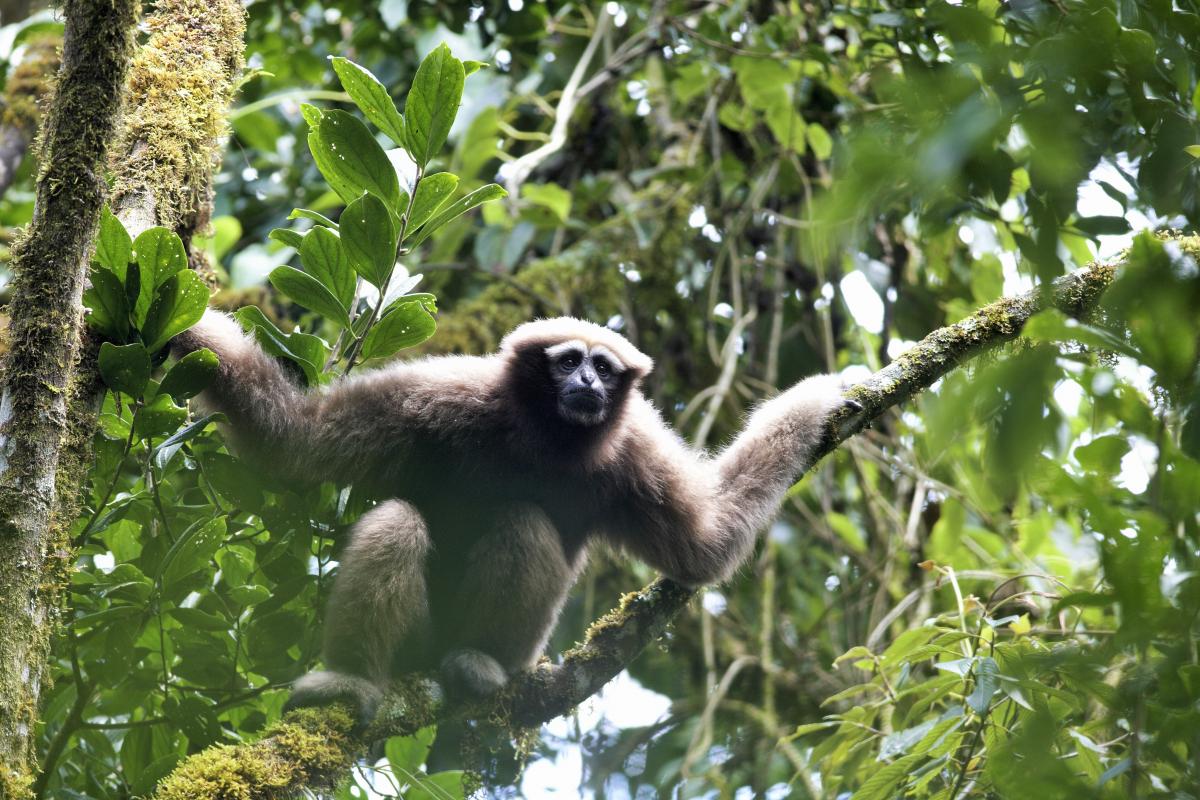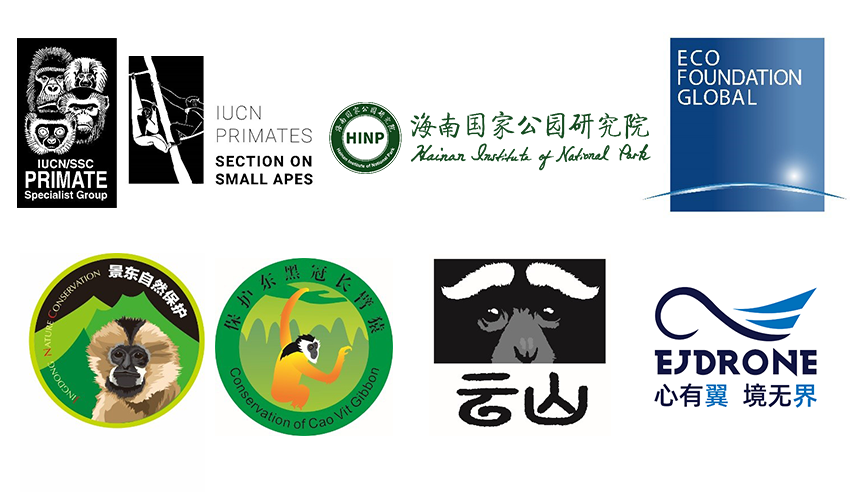Establishment of the Global Gibbon Network Initiative
The following statement was announced by Dr Jane Smart, Global Director of the Biodiversity Conservation Group and Director of the Global Species Programme at IUCN, at the fifth Anniversary Celebration of International Gibbon Day on Saturday 24 October 2020. The event was held in Haikou, Hainan Province, China, with all the international guests joining online.

An adult female Skywalker Hoolock Gibbon (Hoolock tianxing). This species is Endangered on the IUCN Red List of Threatened Species.
Photo: Professor Fan Peng-Fei of Sun Yat-Sen University, China
The IUCN SSC Primate Specialist Group Section on Small Apes and the International Collaboration to Conserve Gibbons and Siamang have joined forces with The Hainan Institute of National Parks and Eco Foundation Global to establish the Global Gibbon Network Initiative.
Vision
To safeguard and conserve a key element of Asia’s unique natural heritage: the singing gibbons and their habitats, by promoting participatory conservation policies, legislations, and actions.
For gibbon conservation to be effective, we need to achieve the following Goals:
- Improve conservation awareness for local communities;
- Stabilise and develop livelihood buffer zone communities;
- Harmonise the benefits of conservation and livelihood development, ensuring that the use of wild living resources is sustainable;
- Encourage the participation of local communities and stakeholders in the management of protected areas;
- To become a showcase model of species conservation at international level;
- Promote internal resources for gibbons conservation and development, and other biodiversity values;
- Protect, expand and improve the quality of habitat and create corridors connecting areas of high biodiversity;
- Build wildlife rescue centers, research and store rare genetic resources, improve management and law enforcement capacity, create links of expertise with ex situ centers (zoo).
We will do this through being:
- Purposeful and action-oriented: focussing on achievement of the Vision.
- Ambitious: inspiring all stakeholders to strive to reach it.
- Inspirational: encouraging enthusiasm and commitment.
- Appropriate: fitting with the place, history and culture.
- Future-oriented: to continue to work for the Vision, conquering new challenges.
In addition we will:
- Strengthen coordination among gibbon conservation projects worldwide including zoos;
- Increase awareness of scientifically-sound practice in gibbon conservation;
- Provide IUCN-endorsed guidelines to conservationists, field scientists and decision makers;
- Develop Conservation Action Plans that clarify priorities in gibbon conservation for practitioners, decision makers and donors;
- Ensure that The IUCN Red List of Threatened SpeciesTM as a decision tool is thorough and up-to-date, and
- Provide direct technical support to implementing projects engaged with gibbon conservation.
To achieve this we must:
- Promote local capacity, conservation education and awareness; and
- Involve communities in conservation efforts.
- Rationalise and restore the existing protected area network and improve protected area management;
- Develop a framework for wildlife conservation focusing on the gibbon as a flagship species outside protected areas and promote ecologically responsible development;
- Restore degraded landscapes;
- Initiate meta-population management for stray and isolated populations;
- Promote a knowledge-based approach to conservation and an adaptive framework for wildlife management;
- Reduce existing anthropogenic pressures, including the illegal trade in wildlife, on natural resources.
 Photo: IUCN SSC, HINP, EFG, EJDRONE, Dali Biodiversity Conservation and Research Center, Conservation of Cao Vit Gibbon, INC
Photo: IUCN SSC, HINP, EFG, EJDRONE, Dali Biodiversity Conservation and Research Center, Conservation of Cao Vit Gibbon, INC



